115
[111] Midmore, D.J. (1993), Agronomic modification of resource use and intercrop productivity, Field Crops Research, 34, tr. 357-380.
[112] Midmore, D.J. (1990), Scientific basic and scope for improvement of intercropping with potato in the tropics, Field Crops Research, 25, tr. 3-24.
[113] Montgomery, E.G. (1911), Correlation studies in corn, 24th Annual Report, Agricultural Experiment Station, Nebraska, Mo, USA, tr. 108-159.
[114] Morgan, R.P. (1984), Priorities for technical research in soil, Workshop, Changmai, Thailand.
[115] Morris, R.A. & D.P. Garrity (1993a), Resource capture and utilization in intercropping: non-nitrogen nutrients. , Field Crops Research, tr. 319-334.
[116] Morris, R.A. & D.P. Garrity (1993b), Resource capture and utilization in intercropping: water, Field Crops Research, 34, tr. 319-334.
[117] Ogenga, L., M.W.,, J.K.O. Ampofo & C.W. Baliddawa (1992b), Influence of maize spacing in infestation and damage of intercropped beans by the bean aphid (Aphis fabae Scop.). II. Reduction in bean yields, Field Crops Res., 30, tr. 123-130.
[118] Ogenga, L., M.W.,, J.K.O. Ampofo & C.W. Baliddawa (1992a), Influence of maize spacing in infestation and damage of intercropped beans by the bean aphid (Aphis fabae Scop.). I. Incidence of aphids, Field Crops Res., 30, tr. 111- 121.
Có thể bạn quan tâm!
-
 Năng Suất Mủ Qua Các Tháng Khai Thác Tại Hương Trà
Năng Suất Mủ Qua Các Tháng Khai Thác Tại Hương Trà -
 Chỉ Số Bệnh Sau Khi Xử Lý Thuốc Ngoài Đồng Ở Hương Trà Và Nam Đông
Chỉ Số Bệnh Sau Khi Xử Lý Thuốc Ngoài Đồng Ở Hương Trà Và Nam Đông -
 Nghiên cứu một số biện pháp kỹ thuật canh tác phù hợp cho cây cao su tiểu điền tại Thừa Thiên Huế - 16
Nghiên cứu một số biện pháp kỹ thuật canh tác phù hợp cho cây cao su tiểu điền tại Thừa Thiên Huế - 16 -
 Sử Dụng Máy Bơm Cao Áp Phu Thuốc, Phân Vi Sinh Cho Vườn Cao Su
Sử Dụng Máy Bơm Cao Áp Phu Thuốc, Phân Vi Sinh Cho Vườn Cao Su -
 Một Số Yếu Tố Thời Tiết Ở Thừa Thiên Huế 2016-2020
Một Số Yếu Tố Thời Tiết Ở Thừa Thiên Huế 2016-2020 -
 Nghiên cứu một số biện pháp kỹ thuật canh tác phù hợp cho cây cao su tiểu điền tại Thừa Thiên Huế - 20
Nghiên cứu một số biện pháp kỹ thuật canh tác phù hợp cho cây cao su tiểu điền tại Thừa Thiên Huế - 20
Xem toàn bộ 184 trang tài liệu này.
[119] Pathiratna, L.S.S. & Perera M.K.P. (2002), Contour and east west row planting systems of rubber (Hevea) for inter cropping, part 1. Effects on growth and yield of component crops, Journal of the Rubber Research Institute of Sri Lanka, 85, tr. 53-56.
[120] Patil, V.C., E.D. Hosamari, M.M. Chittapu & B.M. Hiremath (1990), Principles of intercropping, Agricultual University Dharwad, India.
[121] Phansamai, P., Chutamas S., Paul B., Malcolm P. & Sara B. (2011), The impact of rubber plantations on the diversity and activity of understorey insectivorous bats in southern Thailand, Biodiversity and Conservation, 20, tr. 1441-1456.
[122] Pushparajah, E. & Tan S.K. (1970), Taipioca as an intercrop in rubber, Crop diversification in Malaisia by Blencowe E.K. & Blencowe J.K., Incorporated Society of planter, Kuala Lumpur, tr. 128-138.
[123] Rajasekharan, P.E. & Veeraputhran S. (2004), Adoption of intercropping in rubber smallholdings in Kerala, India: a tobit analysis, Agroforestry Systems,, 56, tr. 1-11.
[124] Rajendra, H. (1995), Integrated plantation development, a success story, Coffee boand of Indian, 16, tr. 7-8.
[125] Riwandi, Prasetyo, Hasanudin, Cahyadinata Indra, Munawar Ali & Doni Rachma (2018), Improvement of latex quality using locally-produced organic fertilizer from rubber processing sewage sludges, Journal of tropical soils, 22, tr. 155.
116
[126] Rodrigo, V.H.L., Stirling C. M., Naranpanawa R.M.A.K.B. & Herath P.H.M.U. (2001), Intercropping of immature rubber present status in Sri Lanka and financial analysis of rubber intercrops planted with three densities of banana, Agroforestry Systems, 51, tr. 35 - 48.
[127] Rodrigo, V.H.L. (1997), Population Density Effects on Light and Water Use of Rubber/Banana Interculture Systems of Sri Lanka, Ph.D. thesis, University of Wales, U.K.
[128] Rodrigo, V.H.L., Stirling C.M., Naranpanawa R.M.A.K.B. & Herath P.H.M.U. (2001), Intercropping of immature rubber present status in Sri Lanka and financial analysis of rubber intercrops planted with three densities of banana, Agroforestry Systems, 51, tr. 35-48.
[129] Rosa, F.H., Edwin Hondrade, Lianqing Zheng, Francisco Elazegui, Jo-Anne Lynne, Joy E. Duque, Christopher C. Mundt, Casiana M. Vera Cruz & Karen
A. Garrett (2017), Cropping system diversification for food production in Mindanao rubber plantations: a rice cultivar mixture and rice intercropped with mungbean, Peer J 5, e 2975.
[130] Rosyld, M.J., Wibawa G. & Gunawan A. (2002), Rubber based farming systems development for increasing smallhoders income in Indonesia, Rubber Research Institute of Indonesia.
[131] Rubber Research Institute of Malaysia - RRIM (1992), Training Manual on Soils, Management of Soils and Nutrition of Hevea.
[132] Rubber Statistical Buletin (2020).
[133] Samuel, M. (2014), Effect of intercropping on the gestation period of rubber, Wudpecker Journal of Agricultural Research, ISSN 2315-7259 Vol. 3(8), tr. 150–153.
[134] Sarkar, R.K. & D. Pramanik (1992), Effects of planting pattern in sesame + mungbean intercropping system, Ind. Agriculturists, 36(1), tr. 19-24.
[135] Sarkar R.K. & N. Dhara (1992), Effects of intercropping on physio-agronomic attributes of sunflower and overall advantage in intercropping system of sunflower with oilseed and pulse crop, Ind. Agriculturists, 36(3), tr. 149-156.
[136] Srinivas, P. & Idicula S.P. (2006), Fungicides in Corynespora leaf fall disease management. A Laboratory Manual for International Training on Strategies for Management of Corynespora Leaf Fall Disease of Hevea Brasiliensis (C.K. Jacob, P. Srinivas, C. Bindu Roy), Rubber Research Institute of India, Kottayam, India, tr. 40-49.
[137] Stern, W.R. (1993), Nitrogen fixation and transfer in intercrop systems, Field Crops Res., 34, tr. 335-356.
[138] Takeuchi, T., Kubo C. & Ishii H. (2006), Sensitivity of Chiba Prefecture isolates of Corynespora cassiicola, the cause of Corynespora leaf spot on cucumber, to several fungicides, 53, Tosan Plant Protection Society, Annal report of the Kanto, tr. 55-60.
117
[139] Tate, L. (2016), How To Grow Ginger: How to grow, harvest, use, and perpetuate this tropical spice in a non-tropical climate, Kindle Edition, Publisher by Kikobian.
[140] Timothy, E., J.R. Orimoloye , I.K. Ugwa & S.O. Idoko (2003), Potentials of Multiple Cropping Systems in Young Rubber Plantations,, Journal of Sustainable Agriculture, 22(4).
[141] Timothy, U.E. & Ikokwu K. Okore (2012), Impact of Different Spacings of Cooking Banana Intercropped with Rubber on Soil Fertility Attributes and Maturity Rate of the Trees in a Humid Forest Area of South Eastern Nigeria, Open Journal of Forestry, 2(2), tr. 65-70.
[142] Tisdale, S.L. & V.L. Nelson (1975), Soil fertility and fertilizers, MacMil - lan Publishing Co.
[143] Tran H., Kruijt M. & Raaijmakers J. M. (2008), Diversity and activity of biosurfactant-producing Pseudomonas in the rhizosphere of black pepper in Vietnam, Journal of Applied Microbiology 104, tr. 839-851.
[144] Trenbath, B.R. (1993), Intercropping for management of pests and diseases, Field Crops Res., 34, tr. 381-405.
[145] Umoh, F. & Fashoranti Ebenezer L. (2018), Corynespora leaf fall of Hevea brasilensis: Challenges and prospect, African Journal of Agricultural Research, Vol. 13(40), tr. 2098-2103.
[146] UPOV (1996), Guidelines for the conduct of tests for distinctness, uniformity and stability, ginger (Zingiber officinale Rosc.), Geneva, Switzeland.
[147] Vandermeer, J. (1989), The Ecology of intercropping, Cambridge Univ. Press, Cambridge. 237.
[148] Wibawa, G., Thomas D. Tambunan, M.J. Rosyid & A. Gunawan (1997), Study of the Component Interactions in Hevea Based Intercropping Systems. Proc. Symposium on Farming System Aspects of the Cultivation of Natural Rubber (Hevea brasiliensis). , IRRDB, United Kingdom, tr. 25-40.
[149] Wibawa G. & Thomas (1997), Stuy of Hevea based intercropping system functioning. Pp 25-39. In Proceeings of the Symposium on Farming System Aspects of the Cultivation of Natural Rubber (Hevea brasiliensis), Beruwala, Sri Lanka, 5-8 Nov. 1996. Int. Rubber Res and Develop, Board, United Kingdom.
[150] Willey, R.W. (1979), “Intercropping-its importance and research needs”. (Part I: Competition and yield advantages), Field crop, Australia, 32, tr. 1-10.
[151] Willey, R.W. (1979), Intercropping-its importance and research needs, Field crop, Australia, 32, tr. 1-10.
[152] Ye, L., Zhao Xia, Bao Encai, Li Jianshe, Zou Zhirong & Cao Kai (2020), Bio- organic fertilizer with reduced rates of chemical fertilization improves soil fertility and enhances tomato yield and quality, Scientific Reports, 10.
118
[153] Zhao, W., Deng DaHua, Yang WenXiu, Wei ChangBin & Sun GuangMing (2013), Intercropping new pineapple cultivars in young rubber plantation in Yunnan province., Journal of Southern Agriculture, 44(5) tr. 806-809 ref.18.
[154] Zhen, X.Z., Yankui G. & Qi Z. (1996), Effects of shading on ultrastructure of chloroplast and microstructure of ginger leaves, Acta Horticulture Sinica, 26(2), tr. 96-100.
[155] Zheng, H. & He Kejun (1997), Intercropping in rubber plantation and its economic benefit, In: Agroforestry Systems in China. Chinese Academy of forestry and IDRC.
Internet
[156] Agro-climatic Requirements (2018), Truy cập ngày, http://rubberboard.org.in/ManageCultivation.asp?Id=33
[157] Bách khoa toàn thư mở (2018), Cây cao su,, Truy cập ngày: 05/01/2018, http://vi.wikipedia.org/wiki/Cao_su_(c%C3%A2y)
[158] Dư địa chí Thừa Thiên Huế (2020), Mứt gừng Huế, Truy cập ngày: 31/5/2020, https://thuathienhue.gov.vn/vi-vn/Thong-tin-du-dia-chi/tid/Mut-gung- Hue/newsid/94EBACB4-9C74-4312-A016-C30FD93504E5/cid/92BBEC10- 4332-44AA-BA31-6E1E546D56A5
[159] FAO Việt Nam (2019), Phân hữu cơ sinh học, Truy cập ngày: 26/3/2021, https://www.fao.org.vn/phan-bon/huu-co-sinh- hoc/#:~:text=Ph%C3%A2n%20h%E1%BB%AFu%20c%C6%A1%20sinh%20 h%E1%BB%8Dc%20%E1%BB%A9c%20ch%E1%BA%BF%20c%C3%A1c
%20vi%20sinh,ph%C3%A1t%20tri%E1%BB%83n%20c%E1%BB%A7a%20c
%C3%A2y%20tr%E1%BB%93ng.
[160] FAO Việt Nam (2020), Thuốc bảo vệ thực vật sinh học là gì?, Truy cập ngày: 22/3/2020, https://www.fao.org.vn/bvtv/thuoc-bao-ve-thuc-vat-sinh- hoc/#Thuoc_bao_ve_thuc_vat_sinh_hoc_la_gi
[161] FAOSTAT (2021), Truy cập ngày: 26/3/2021, http://www.fao.org/faostat/en/#data/
[162] Lê Hùng (2018), Cách lựa chọn và sử dụng nấm Trichoderma đúng cách, Truy cập ngày: 2/2/2020, https://sinhhocvietnam.vn/cach-lua-chon-va-su-dung-nam- trichoderma-dung-cach/
[163] Bảo Khánh (2017), Hiệu quả từ trồng dứa xen canh dưới tán rừng cao su ở Mường Chà, Truy cập ngày: 1/12/2019, https://thitruongcaosu.net/2017/06/27/hieu-qua-tu-trong-dua-xen-canh-duoi-
tan-rung-cao-su-o-muong-cha/
[164] Gia Kiệt (2017), Nâng thu nhập nhờ trồng xen dứa trong cao su, Truy cập ngày: 1/3/2020, http://tapchicaosu.vn/tin-tuc/thoi-su-trong-nganh/nang-thu- nhap-tu-trong-xen-dua-trong-cao-su.html
119
[165] Mai Luận (2015), Trồng nghệ xen canh với mô hình khép kín, Truy cập ngày: 25/5/2020, http://tapchicaosu.vn/tin-tuc/thoi-su-trong-nganh/trong-nghe-xen- canh-voi-mo-hinh-khep-kin.html
[166] Mai Hưng (2015), Mô hình trồng xen canh tại các nước, Truy cập ngày: 2/6/2020, http://tapchicaosu.vn/tin-tuc/ky-thuat-cao-su/mo-hinh-trong-xen- canh-tai-cac-nuoc.html
[167] Trọng Nguyên (2017), Trồng xen canh cho thu nhập cao, Truy cập ngày: 2/6/2020, http://tapchicaosu.vn/tin-tuc/thoi-su-trong-nganh/trong-xen-canh-cho- thu-nhap-cao.html
[168] Thanh Sơn (2015), “Trồng Gừng dưới tán lá vườn Cao su” gây quỹ hoạt động cho Đoàn thanh niên tại Cty TNHH MTV Cao Su Dầu Tiếng, Truy cập ngày: 1/6/2020, http://tuoitrebinhduong.vn/News/ld/4598/mo-hinh-trong-gung-duoi- tan-la-vuon-cao-su-gay-quy-hoat-dong-cho-doan-thanh-nien-tai-cty-tnhh-mtv- cao-su-dau-tieng
[169] Nguyễn Đăng Sỹ (2015), Kinh nghiệm trồng xen hoa màu tại Cao su Quảng Trị, Truy cập ngày: 3/3/2020, http://tapchicaosu.vn/tin-tuhttpc/ky-thuat-cao- su/kinh-nghiem-giai-phap/kinh-nghiem-trong-xen-hoa-mau-tai-cao-su-quang- tri.html
[170] Syngenta Việt Nam (2020), Truy cập ngày: 4/3/2020, https://www.syngenta.com.vn/
[171] Tạp chí cao su Việt Nam (2015), Trồng cây gì nâng cao hiệu quả sử dụng đất?, Truy cập ngày: 10/5/2020, http://tapchicaosu.vn/2015/04/02/trong-xen-canh- cay-gi-de-tang-hieu-qua-su-dung-dat/
[172] VYR (2021), Một số khái niệm trong ngành cao su, Truy cập ngày: 25/3/2021, http://vietyrubberband.com/tin-tuc/mot-so-khai-niem-trong-nganh-cao-su- 56.html#:~:text=Cao%20su%20ti%E1%BB%83u%20%C4%91i%E1%BB%81 n%3A%20l%C3%A0,tri%E1%BB%83n%20cao%20su%20thi%C3%AAn%20 nhi%C3%AAn.
[173] Willy, V. (2010), Growth and Production of Rubber. In: Verheye, W. (ed.),
Land Use, Truy cập ngày: 11/12/2010, http://www.eolss.net
[174] Willy Verheye (2010), Growth and Production of Rubber, Truy cập ngày: 11/12/2017, http://www.eolss.net
[175] Nair, K.P. (2019), Ginger Physiology. In: Turmeric (Curcuma longa L.) and Ginger (Zingiber officinale Rosc.), World's Invaluable Medicinal Spices. Springer, Cham Truy cập ngày: 12/6/2020, https://doi.org/10.1007/978-3-030- 29189-1_17
PHỤ LỤC
PHỤ LỤC 1: MỘT SỐ HÌNH ẢNH LIÊN QUAN ĐẾN LUẬN ÁN
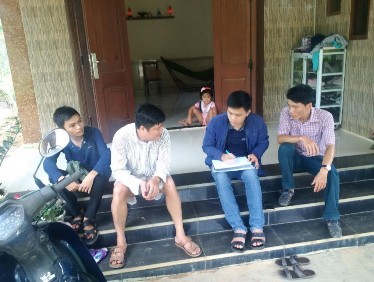
Hình 1. Phỏng vấn nông hộ
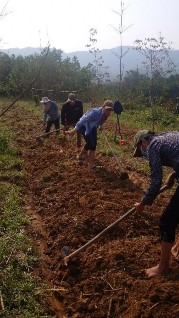
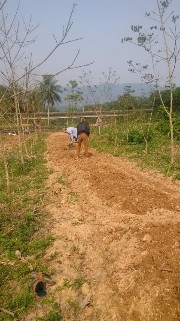
Hình 2. Làm đất bố trí thí nghiệm
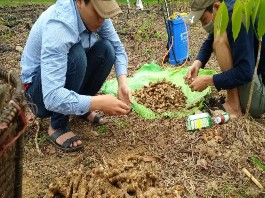
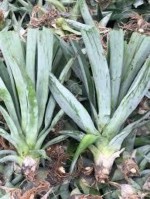
Hình 3. Vật liệu bố trí thí nghiệm, giống gừng và dứa
Hình 4. Phân hữu cơ sinh học đậm đặc (Trimix-N1) và phân vi sinh siêu đậm đặc (Trichomix-DT)
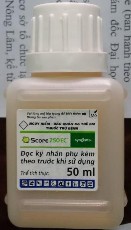
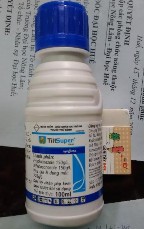
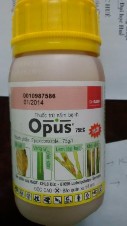
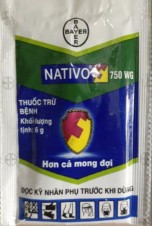
Hình 5. Các loại thuốc trừ nấm được sử dụng
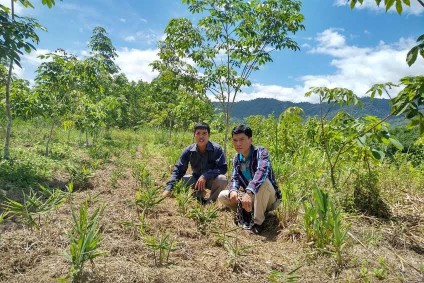
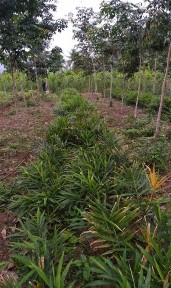
Hình 6. Thí nghiệm trồng xen gừng
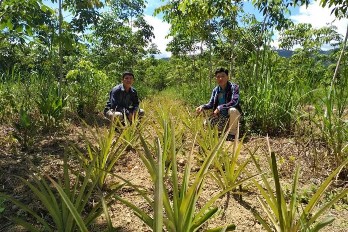
Hình 7. Thí nghiệm trồng xen dứa
Hình 8. Đất đèn xử lý ra hoa dứa






